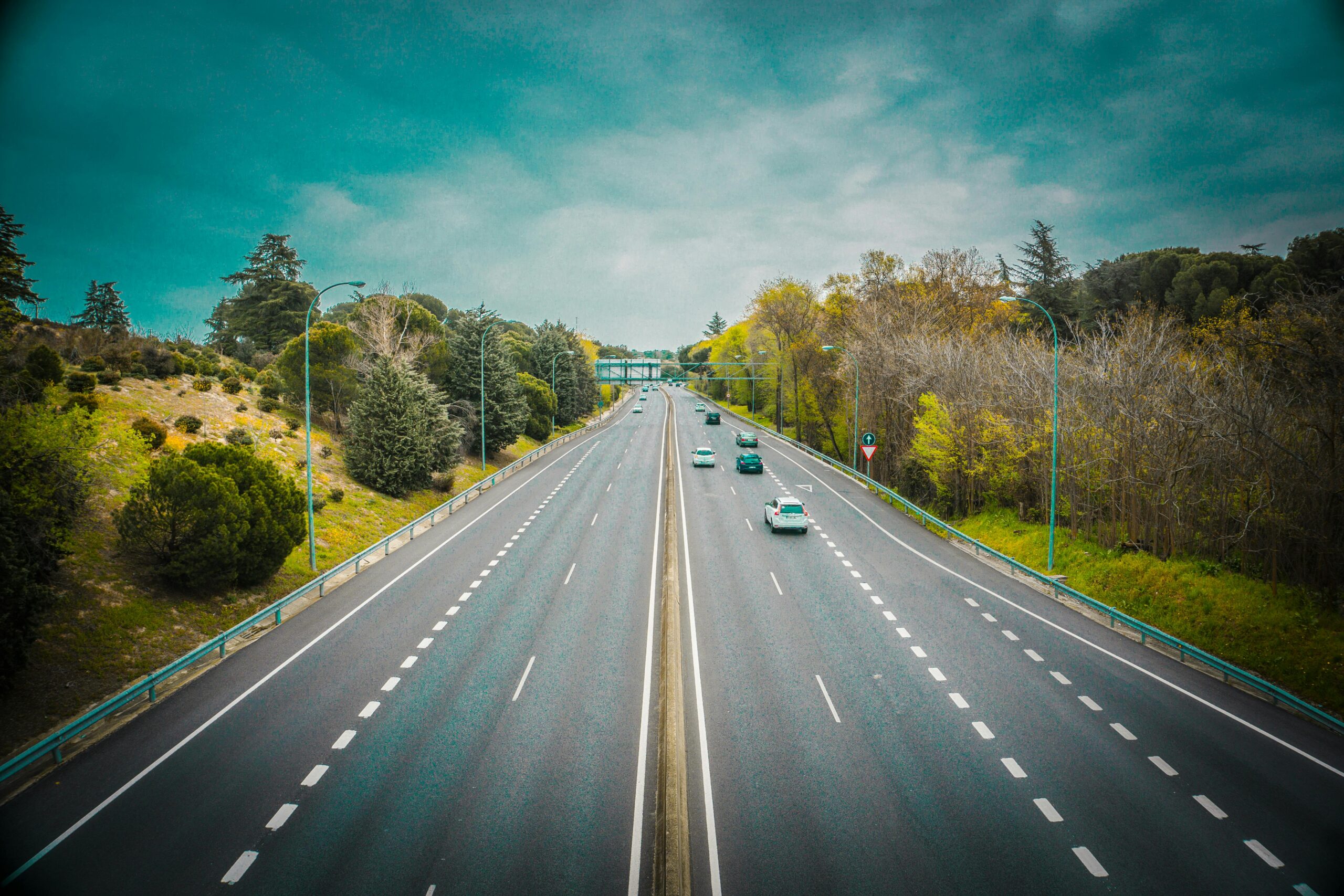
Uttar Pradesh’s Economic Corridor: Connecting Growth and Development
Key Highlights:
- Uttar Pradesh is set to benefit from over ₹60,000 crore of investment through major economic corridors like the Eastern Peripheral Expressway and Purvanchal Expressway.
- The Delhi-Mumbai Industrial Corridor (DMIC) and Purvanchal Expressway will create over 1.5 lakh jobsin the state by 2025.
- Agra-Lucknow Expressway has already reduced travel time between major cities by over 50%.
- The Uttar Pradesh Defence Industrial Corridor aims to generate ₹50,000 crore in investments and 2.5 lakh jobs by 2030.
Introduction
Uttar Pradesh, India’s most populous state and a key player in the national economy, is strategically positioned to become a hub of economic growth and development. With an expansive landmass, significant agricultural output, and a large workforce, Uttar Pradesh is unlocking its full economic potential through the development of economic corridors. These corridors are transforming infrastructure, connecting critical regions, and driving investments in sectors like manufacturing, logistics, and defense. As the state invests in infrastructure and connectivity, it is poised to become one of the most important economic engines in India.
Key Economic Corridors Driving Growth
- Purvanchal Expressway: Connecting the Eastern Regions
The Purvanchal Expressway, inaugurated in 2021, is one of the most significant infrastructure projects in Uttar Pradesh. Stretching across 340 kilometers, it connects the eastern and central regions of the state, providing enhanced connectivity between cities like Lucknow, Varanasi, and Gorakhpur. The expressway is expected to attract ₹10,000 crore in investment and create over 50,000 jobs by 2025.
According to the Uttar Pradesh Expressways Industrial Development Authority (UPEIDA), the expressway will also improve access to key economic hubs, such as Prayagraj and Azamgarh, facilitating smoother transport of goods, services, and people. This will not only boost agricultural and industrial productivity but also improve overall economic connectivity for the state.
- Delhi-Mumbai Industrial Corridor (DMIC): Linking Two Major Economic Hubs
The Delhi-Mumbai Industrial Corridor (DMIC), one of the largest infrastructure projects in India, passes through Uttar Pradesh, connecting the National Capital Region (NCR) with Mumbai. Uttar Pradesh will benefit from key industrial zones, such as Greater Noida, Dadri, and Aligarh, where the establishment of manufacturing hubs will foster the growth of industries like automobiles, electronics, and textiles.
The DMIC is expected to generate over ₹60,000 crore of investments in the state and create 1.5 lakh jobs by 2025. According to the Ministry of Commerce and Industry, the development of this corridor will not only boost manufacturing and industrial output but also position Uttar Pradesh as a key hub for export-oriented industries.
- Agra-Lucknow Expressway: Enhancing Connectivity Between Major Cities
The Agra-Lucknow Expressway, inaugurated in 2018, has drastically reduced travel time between Agra and Lucknow by over 50%. This expressway plays a critical role in improving connectivity within Uttar Pradesh, connecting Western Uttar Pradesh to the state capital, Lucknow, and further enhancing economic integration with other regions. The expressway has led to the growth of industries along its route, including automobiles, textiles, and tourism, especially around Agra, which is a major tourist destination.
By improving road connectivity, the expressway has increased the flow of goods and services, reduced logistics costs, and supported local businesses. It is expected to play a pivotal role in increasing trade and investment in the state.
Defense and Industrial Development: The Uttar Pradesh Defence Corridor
- Uttar Pradesh Defence Industrial Corridor
Another critical component of Uttar Pradesh’s economic future is the Uttar Pradesh Defence Industrial Corridor, a flagship project aimed at positioning the state as a leader in defense manufacturing. This corridor, established in 2018, spans cities such as Aligarh, Agra, Kanpur, and Lucknow, focusing on manufacturing defense equipment, aerospace technologies, and electronics.
The corridor is projected to attract ₹50,000 crore of investments and generate 2.5 lakh jobs by 2030. According to the Defence Ministry, the corridor will foster collaborations between private defense manufacturers and the government, creating a robust ecosystem for defense production. The establishment of defense production units will create long-term opportunities for employment, technological advancements, and export-oriented growth.
Impact on Infrastructure, Employment, and Trade
- Infrastructure Development
As Uttar Pradesh focuses on improving its road, rail, and air connectivity, these corridors are unlocking economic potential through the construction of roads, airports, industrial parks, and logistics hubs. The Purvanchal Expressway and Delhi-Mumbai Industrial Corridor are also facilitating the development of logistics parks, which will play a crucial role in reducing transportation costs, speeding up trade, and enhancing the state’s supply chain management.
According to the Uttar Pradesh Infrastructure and Industrial Development Commissioner (IIDC), improved infrastructure will lead to better access to markets, better connectivity with neighboring states, and greater investment from both domestic and international companies.
- Job Creation and Industrial Growth
The creation of special economic zones (SEZs) and industrial hubs along these corridors will create thousands of jobs across sectors. The expansion of the manufacturing, logistics, and defense industries will drive employment in both skilled and unskilled sectors. In addition, growth in the tourism and retail sectors, driven by improved connectivity, will further contribute to job creation and economic growth.
By focusing on skill development, the state is also preparing its workforce to take on high-value jobs in emerging sectors like aerospace, electronics manufacturing, and renewable energy. The Uttar Pradesh Skill Development Mission has been instrumental in this effort, offering training and certification programs that align with the needs of these high-growth industries.
Challenges and the Road Ahead
While Uttar Pradesh’s economic corridors hold immense promise, several challenges remain. These include:
- Environmental Sustainability: Balancing industrial growth with environmental sustainability will be critical. The state must ensure that its infrastructure projects align with green development principles, integrating renewable energy sources and sustainable construction practices.
- Land Acquisition and Regulatory Hurdles: While economic corridors have attracted significant investment, land acquisition for infrastructure projects has often been a contentious issue. Ensuring transparency and fairness in land acquisition will be essential to avoid conflicts and delays.
- Ensuring Equitable Growth: As the state develops, it is important that the benefits of these corridors are distributed equitably, ensuring that rural and underserved areas benefit as much as urban centers. Inclusive growth will require targeted policies that support small and medium-sized businesses, agriculture, and local entrepreneurship.
Conclusion
Uttar Pradesh’s economic corridors are transforming the state into a major hub for manufacturing, logistics, defense production, and trade. With significant investments in infrastructure, industrial development, and job creation, Uttar Pradesh is poised for sustained growth and development. However, addressing challenges like sustainability, land acquisition, and equitable growth will be crucial to ensuring that these corridors deliver long-term benefits for all residents.
As Uttar Pradesh continues to strengthen its economic infrastructure and foster innovation, it will not only create new opportunities for its citizens but also contribute to the broader economic development of India.
Sources:
- Uttar Pradesh Expressways Industrial Development Authority (UPEIDA)
- Ministry of Commerce and Industry, Government of India
- Uttar Pradesh Infrastructure and Industrial Development Commissioner (IIDC)
- Defence Ministry, Government of India
- Uttar Pradesh Skill Development Mission


